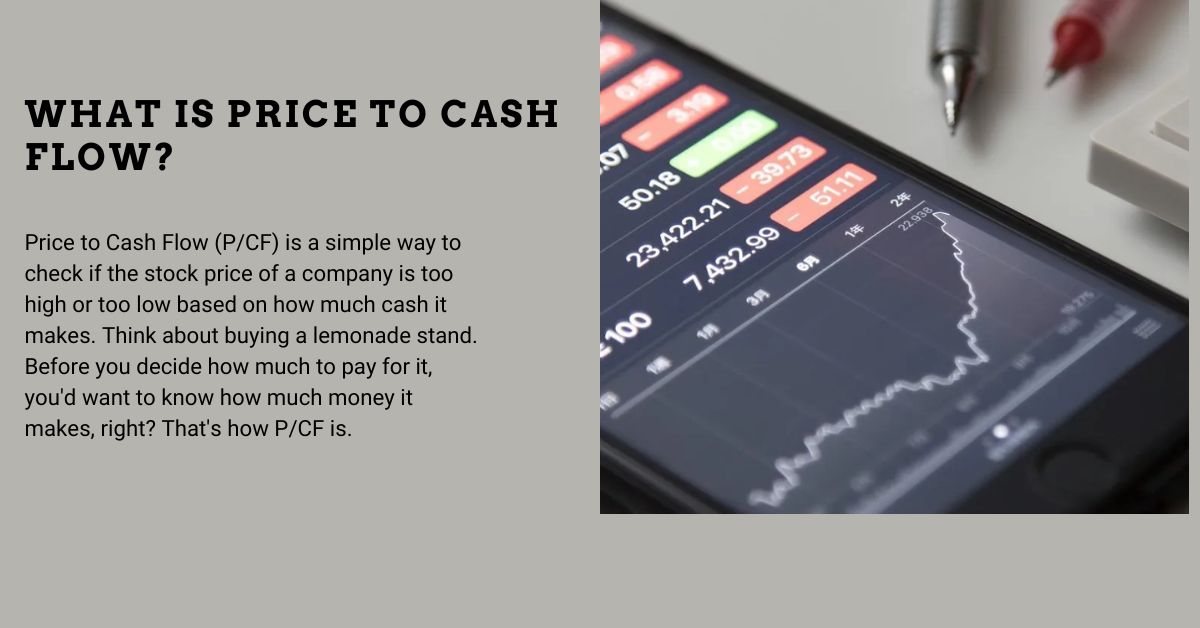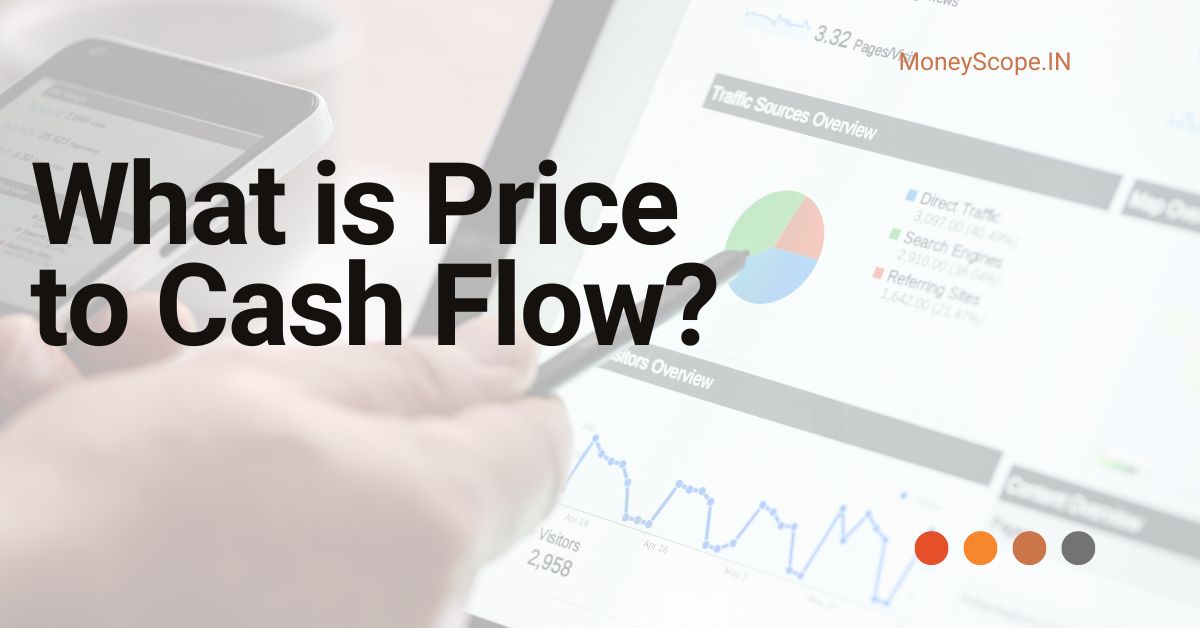A way to figure out how much a company is worth is to look at its price-to-cash flow ratio (P/CF). It’s also known as “price to net cash” or “price ttm.” There are many financial measures that can be used to help figure out how much a company is worth. One of them is the price-to-cash flow ratio.
This article will go into great depth about price-to-cash flow, including what it is and how to figure it out. It has benefits, can be used in different situations, and more.
What is Price to Cash Flow?

Price to Cash Flow (P/CF) is a simple way to check if the stock price of a company is too high or too low based on how much cash it makes. Think about buying a lemonade stand. Before you decide how much to pay for it, you’d want to know how much money it makes, right? That’s how P/CF is.
For every dollar of cash the business makes, it tells you how much you’re paying. When the P/CF is low, you’re getting less for each dollar of cash, which usually means the stock might be a better deal.
Formula for the Price-to-Cash Flow Ratio
Price to Cash Flow (P/CF) Ratio Formula
There are two ways to calculate the P/CF ratio:
For the whole company:
P/CF = Market Capitalization / Operating Cash Flow
Per share:
P/CF = Share Price / Operating Cash Flow per Share
- Market Capitalization is the total value of a company’s outstanding shares.
- Operating Cash Flow is the cash a company generates from its normal business activities.
- The company’s operating cash flow divided by the total number of outstanding shares yields operating cash flow per share.
What Does the Price-to-Cash Flow (P/CF) Ratio Tell You?
The Price-to-Cash Flow (P/CF) number tells you how much a business costs for every dollar it makes in cash. Like getting a fruit stand. Before you decide how much to pay for it, you’d want to know how much money it makes, right? In general, a low P/CF means you’re getting a better deal since the business is making less cash from sales. If you want to find a cheap company among similar ones, this tool can help.
Advantages and Disadvantages of P/CF
| Advantage | Disadvantage |
|---|---|
| Relatively easy to calculate | Doesn’t consider future growth potential |
| It helps compare similar companies | Ignores non-cash expenses (depreciation, etc.) |
| Useful for identifying undervalued stocks | Can be misleading for cyclical companies |
What is a Good Price to Cash Flow Ratio?
A P/CF number below 10 is usually a good sign. In other words, you’re giving the business less than $10 for every dollar it makes. But keep in mind that this is just a general rule. The best P/CF ratio can be very different based on the market, the company’s size, its growth prospects, and the industry as a whole. A lower P/CF often means that a company is probably not worth as much as it is, but you should still think about other things before investing.
Remember that a low P/CF doesn’t mean that a company will be successful in the future, and a high P/CF doesn’t always mean that a company is overpriced. It’s only a part of the picture.
What is Negative Price to Cash Flow Ratio?
A Price to Cash Flow (P/CF) relationship that is negative is strange and means that a business is losing money. This means that the business is losing money instead of making it. It is possible for a business to have a temporary negative cash flow because of investments or growth plans, but a P/CF that stays negative is a bad sign.
This makes me think that the company might be having money problems and might not be a good bet. Before deciding to spend, it’s important to learn more about the company’s finances to find out why it has negative cash flow. A negative P/CF means that you spend more money than you make. The money problem needs to be looked at very carefully.

